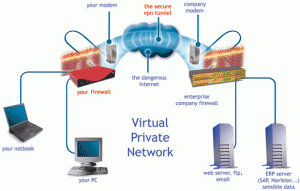 Anyone who has ever accessed their company’s computer network remotely has done so through a proxy server. Most companies employ the use of virtual private networks, also known as VPN’s as a proxy server. A VPN will secure the company’s network from intrusion by outsiders while at the same time allowing employees to access the parts of the network they need in order to do work they need to do.
Anyone who has ever accessed their company’s computer network remotely has done so through a proxy server. Most companies employ the use of virtual private networks, also known as VPN’s as a proxy server. A VPN will secure the company’s network from intrusion by outsiders while at the same time allowing employees to access the parts of the network they need in order to do work they need to do.
For the uninitiated, a proxy connects to a network through a remote location on the internet. The VPN is a permanent connection between the employee’s computer and a computer at the company that is dedicated to meeting the needs that the employee has. This connection creates a virtual tunnel through which all communication between employee and employer will pass through in an encrypted form so that no one else may access what could potentially be sensitive information. The employee sends the information, data, files, etc to the proxy or VPN server. The VPN will then resend the information to the company through the internet.
This means that if there is anyone ‘listening’ in or attempting to hack in to see the information being transferred or websites that you have visited that if they are able to see anything at all, it will be meaningless. If a company chooses to buy cheap proxy services, they may or may not get this added protection of encryption to a degree that would keep unwanted observers out of their system.
This type of proxy is even more secure than the commonly used SSL type as with the SSL the headers of emails and websites visited is easily captured. To put it in the simplest of terms, the VPN acts as a post office that delivers the information you ‘mail’ but strips the return address off of the envelope, hides the stamp and postmark, and makes it seem as if the information you are ‘mailing’ came from an office two floors away from the destination.
You can follow any responses to this entry through the RSS 2.0 feed.

Leave your comment